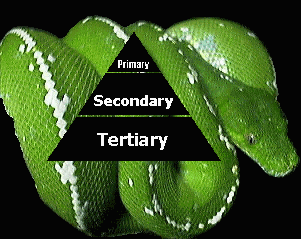
ViPEr HiSS Overview
Motivation
Data sizes for modern applications are in the hundreds of gigabytes and are
rapidly approaching terabyte levels. Popular examples of such applications
include multimedia-on-demand, digital libraries, data mining, and
digital special effects. In addition, many of these applications have real
time or continuity constraints. Even in those that do not, overall throughput
is an important metric.
Due to these trends, system performance has become critically dependent on
the performance of its storage system.
Tertiary storage offers the potential of cheap storage media.
One tradeoff is higher latency.
Amortizing such latency in a storage hierarchy presents an intrinsic
challenge; there are interdependencies between important design choices of a
storage hierarchy.
Our work is directed at the design and optimization of resource management
algorithms
at all levels of the storage hierarchy, particularly with respect to multimedia
applications.
Goals
The goal of this research tool is to provide a framework for performance
evaluation of storage hierarchies.
The focus of this research is storage and retrieval of data objects residing
in secondary and tertiary layers of a storage hierarchy. Our tool is a work
in progress involving cutting edge research concepts.
Our tool provides interfaces for easy construction and performance
evaluation
of hierarchical storage systems. Not only for simple reading and writing, our
tool allows for the specification of data layouts across one or multiple
storage devices.
Future objects will facilitate organization of multimedia (or any data)
objects throughout the entire storage hierarchy, as well as determining
which service guarantees are possible for retrieval of the data.
This project represents a fundamentally important step in a better
understanding of
hierarchical storage systems. It is this understanding that will lead to next
generation systems that can support terabytes of data alongside with real time
constraints of modern applications.
Back to top
This and related pages are copyright 1998, 1999 Joseph Dunnick
Joseph Dunnick
Web Accessibility
